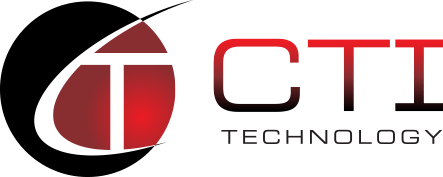NIST Cybersecurity Framework 2.0: Essential Steps for Small Business Success
Are you a small business looking to strengthen your cybersecurity? The NIST Cybersecurity Framework 2.0: Small Business Quick-Start Guide is designed to help small and medium-sized businesses (SMBs) that may not have an extensive cybersecurity plan. This guide is a reliable resource that outlines steps to protect your business from potential cybersecurity threats.
The Small Business Quick-Start Guide simplifies starting a cybersecurity risk management plan, ensuring you can protect your business without requiring extensive technical knowledge. This guide gives you insights into effectively managing risks and securing your business operations.
The guide targets SMBs and other small organizations like non-profits and schools. With easily understandable strategies and tools, it demystifies complex cybersecurity concepts, making them accessible to businesses of all sizes. By following this framework, you’ll be better prepared to handle and respond to cyber threats.
Key Takeaways
- Small businesses can easily start a cybersecurity plan using the Quick-Start Guide.
- The guide provides clear steps for managing cybersecurity risks
- It is suitable for SMBs, non-profits, and schools needing basic cybersecurity strategies
Understanding the Framework
The NIST Cybersecurity Framework 2.0 helps small businesses manage cybersecurity risks effectively. It’s designed to be easy to understand and implement, emphasizing practicality and usability.
Cybersecurity Basics
Cybersecurity protects Internet-connected systems, including hardware, software, and data, from cyberattacks. It’s crucial for preventing unauthorized access, data breaches, and other digital threats. Businesses need basic cybersecurity like strong passwords, firewalls, and data encryption.
Implementing these fundamentals helps safeguard sensitive information. Regular updates, employee training, and monitoring systems are part of a solid cybersecurity foundation. You can start small and expand as your business grows.
Importance for Small Businesses
Small businesses often think they are not targets for cyberattacks. However, they are often more vulnerable due to limited resources and less robust security measures. Cyberattacks can lead to data loss, financial damage, and reputation harm.
The NIST Cybersecurity Framework 2.0 is designed for small businesses. It helps you identify risks, protect assets, detect threats, respond effectively, and recover from incidents. A structured framework can save money and reduce the risk of severe cyber incidents.
Framework Core Structure
The Framework Core consists of five key functions: Identify, Protect, Detect, Respond, and Recover. Each function is essential for a comprehensive cybersecurity strategy.
- Identify: Understand your environment to manage cybersecurity risks to systems, people, assets, and data.
- Protect: Implement safeguards to ensure the delivery of critical services.
- Detect: Develop and implement the capabilities to identify a cybersecurity event.
- Respond: Take action regarding a detected cybersecurity incident.
- Recover: Maintain plans for resilience and restore capabilities impaired by cybersecurity incidents.
This structure helps you manage and reduce cybersecurity risks in a user-friendly way. It’s a practical approach that aligns security measures with your business needs.
Preparation and Planning
Planning and preparation are essential for managing cybersecurity risks. This involves identifying business-specific risks and developing a comprehensive risk management strategy.
Identify Business-Specific Risks
First, understand the particular risks your business faces. Every business is unique, and so are its vulnerabilities. Conduct a thorough assessment to identify where your sensitive data resides and how it is protected.
List possible threats such as malware, phishing, or insider threats. Engage staff in this process to gather insights on potential vulnerabilities. Use questionnaires or interviews to understand how they handle data.
Next, these risks will be categorized based on their potential impact. Is the risk likely to cause minor disruptions, or could it jeopardize your operation? This prioritization helps in focusing resources where they are needed the most.
Develop a Risk Management Strategy
Create a risk management strategy based on identified risks. This strategy should be actionable, focusing on practical steps you can implement immediately. Begin by outlining your goals. What do you want to achieve with your cybersecurity plan?
Document specific policies and procedures for responding to different types of threats. For instance, establish a protocol for handling phishing attacks or data breaches.
Allocate resources effectively. Ensure you have the right tools, technology, and personnel to manage and mitigate risks. Regular training and awareness programs for employees are crucial to keep them informed about the latest threats and how to respond.
Lastly, periodically review and update your strategy. Cyber threats evolve, and so should your approach to managing them. Regular audits and assessments help in keeping your plans relevant and effective.
Implementing the Framework
Implementing the NIST Cybersecurity Framework 2.0 involves several critical steps. This includes managing your assets, controlling access, ensuring your team is trained, securing your data, and protecting your information with well-defined procedures.
Asset Management
Asset management is crucial for identifying and managing your company’s resources. You need to create and maintain an inventory of physical devices, software platforms, and data assets. Each asset should be classified based on its criticality to business operations.
An asset inventory helps you understand what needs protection. It also aids in identifying vulnerabilities and potential risks. Regular updates ensure that this inventory remains accurate and useful.
Use tools that automatically discover and classify assets and integrate your inventory with your cybersecurity policies for optimal protection.
Access Control
Managing access control ensures that only authorized personnel can access your systems and data. It is important to implement strong authentication mechanisms such as multi-factor authentication (MFA).
Define user roles and permissions clearly. Limit access to the least privilege necessary for users to perform their job functions. Regular audits of access controls can help identify and correct unnecessary access rights.
Employing access control tools and technologies helps maintain strict access policies and reduces the risk of unauthorized access, enhancing overall security.
Awareness and Training
Regular cybersecurity training for employees is essential. Awareness programs should cover topics like recognizing phishing attempts, safe browsing practices, and data protection principles.
Conducting cybersecurity drills can also be beneficial. These simulate real-life cyber attacks, helping employees understand how to respond effectively.
Training should be updated regularly to reflect the latest threats and vulnerabilities. Encourage a security-first mindset within your organization to ensure everyone is vigilant and informed.
Data Security
Data security protects your data from unauthorized access, corruption, or theft. Encryption is a fundamental tool in this area. Ensure that sensitive data, both in transit and at rest, is encrypted.
Implement data loss prevention (DLP) technologies to monitor and protect data. Regular backups are also crucial to restore data in case of a breach or accidental loss.
Ensure that data is classified based on sensitivity and that proper handling procedures are followed. This reduces the risk of data breaches and ensures compliance with relevant regulations.
Information Protection Processes and Procedures
Developing and maintaining processes and procedures for information protection is vital. This includes creating incident response plans, which outline steps to take in case of a cyber attack.
Conduct risk assessments regularly to identify and mitigate potential threats. Document and review your protection strategies periodically to keep them current and effective.
Implement monitoring tools to detect suspicious activities and respond promptly. Well-defined processes and procedures ensure your organization can handle cyber threats efficiently and effectively.
Focusing on these aspects of the NIST Cybersecurity Framework 2.0 can help you build a robust cybersecurity strategy that mitigates risks and protects your business.
Detection and Response
In the NIST Cybersecurity Framework 2.0, small businesses can focus on Detection and Response to protect their systems. This involves identifying suspicious activities and having a solid plan for cybersecurity incidents.
Anomaly Detection
Anomaly detection helps identify unusual behavior that could indicate a threat. Implementing basic systems that can flag deviations from normal operations is essential for small businesses. Monitoring network traffic, user activities, and system performance can quickly spot potential issues.
Simple tools and software can automatically compare current activities against established baselines. When an anomaly is detected, alerts are generated to notify the security team. This rapid identification enables quick action to investigate and mitigate potential threats, reducing the risk of damage.
Security Continuous Monitoring
Continuous monitoring keeps your security measures up-to-date and effective. For small businesses, this means regularly tracking security controls and systems. By continuously observing your network, you can catch vulnerabilities and threats in real time.
Use automated tools to scan for security weaknesses, update software, and analyze logs. Regular monitoring ensures your security posture adapts to changing threats. It also helps maintain compliance with industry standards, reducing your risk of cyber incidents.
Incident Response Planning
Incident response planning prepares your business to handle cybersecurity incidents effectively. A well-developed plan includes identifying roles and responsibilities and creating communication protocols. This ensures everyone knows what to do when an incident occurs.
Testing and revising your plan through regular drills helps you stay prepared. Documenting every step ensures that actions are traceable and can be reviewed to improve future responses. With a solid incident response plan, you can minimize the impact of security breaches on your business operations.
Recovery and Continuity
Planning for recovery and ensuring business continuity are crucial in a cybersecurity incident. Focus on developing detailed recovery plans, continuously improving, and maintaining open communications.
Recovery Planning
Effective recovery planning ensures your business can quickly regain functionality after a cyber attack. Start by identifying critical systems and data that are essential for your operations.
Develop detailed recovery procedures for these critical systems, outlining steps for restoring data, reconfiguring hardware, and resuming normal activities. Use clear instructions that can be followed even under stressful conditions. Regularly update and test these procedures to address new threats and changes in your IT environment.
Create backup strategies that include both on-site and off-site storage. This helps ensure that you can access your data even if your primary system is compromised. Schedule regular backups and automate them whenever possible to minimize human error.
Improvements
Improving your recovery and continuity plans involves learning from past incidents and adapting to new challenges. After an incident, conduct a thorough analysis to identify what went wrong and what can be improved.
Review and update your cybersecurity policies and procedures regularly. This includes changing configurations, patching vulnerabilities, and updating software to mitigate new risks. Engage your cybersecurity team in continuous education and training to stay current with the latest threats and best practices.
Utilize feedback from drills and real-world incidents to refine your recovery strategies. This continuous improvement approach helps your organization develop resilience against evolving cyber threats. Document all changes and communicate them clearly to relevant team members to ensure everyone is up-to-date.
Communications
Clear and effective communication is essential for managing incidents and maintaining stakeholder trust. Develop a communication plan that outlines how information will be shared during and after a cybersecurity incident.
Assign team members specific roles and responsibilities for internal and external communications. Ensure that your team knows who to contact and what information can be shared, maintaining a balance between transparency and security.
Prepare templates for press releases, customer notifications, and internal updates to speed up communication. Keep your messages clear and concise to avoid confusion and panic. Include contact information for further assistance to help stakeholders feel supported during the recovery process.
Use multiple channels to disseminate information, such as email, social media, and your company website. This ensures that your message reaches all relevant parties promptly. Review and update your communication plan to align with your recovery and continuity strategies.
Maintaining and Improving Security Posture
Regular reviews, monitoring supplier performance, and managing compliance are crucial to ensuring your organization’s cybersecurity measures remain effective.
Framework Review and Update
It’s important to periodically review and update your cybersecurity framework. This practice helps you identify any gaps or weaknesses that may have developed.
You should schedule these reviews annually or after any major changes in your business operations. Adjust your security protocols based on new threats and advancements in technology.
Engaging with cybersecurity professionals can provide insights into best practices and emerging risks. Regular employee training sessions also help maintain high security standards. Consider using tools and software that automate the review process to ensure thoroughness and efficiency.
Supplier Performance
Monitoring your suppliers’ cybersecurity practices is vital for maintaining a secure ecosystem. Many data breaches occur due to weak security measures among third parties.
Establish criteria for evaluating your suppliers’ security protocols. Regularly audit these suppliers to ensure they meet your standards. This includes checking their compliance with regulations and industry standards.
Develop a system for tracking and reporting any security issues found during audits. Address these issues promptly to prevent possible breaches. Clear contracts outlining cybersecurity expectations can help enforce these standards. Don’t hesitate to end partnerships with suppliers that consistently fail to meet security requirements.
Manage Regulatory Compliance
Staying compliant with cybersecurity regulations is essential to avoid legal penalties and protect your organization’s reputation. Various regulations, such as GDPR and CCPA, mandate specific security practices and controls.
Regularly updating your knowledge of these regulations is necessary. Assign a dedicated compliance officer if possible. They can track changes in laws and ensure your policies are current.
Conduct regular internal audits to verify compliance. Document these processes thoroughly to demonstrate your commitment to following the regulations. Non-compliance can result in hefty fines and damage to your reputation, so taking these steps is critical.
Compliance management tools can simplify the process by automating compliance checks and reporting. Ensure all departments understand the importance of these regulations and their role in maintaining compliance.
Utilizing Framework Profiles
Using the NIST Cybersecurity Framework (CSF) 2.0’s profiles can help you align your cybersecurity practices with your organization’s goals. By adapting these profiles, you can create a robust cybersecurity strategy that suits your unique needs.
Profile Alignment
First, compare your organization’s cybersecurity practices with the aspirational target profile. The target profile outlines the desired outcomes and goals. This helps you see where your organization stands and what improvements are needed.
Steps to Align Profiles:
- Assess Current Profile: Evaluate the existing cybersecurity measures.
- Define Target Profile: Identify the desired security outcomes.
- Gap Analysis: Compare the two profiles to find security gaps.
- Action Plan: Develop steps to address the gaps.
Consistently aligning your profiles ensures your cybersecurity efforts stay focused and effective. Using the CSF Five-Step Process can be particularly beneficial in this regard.
Profile Adaptation
Adapting the profiles involves tailoring them to meet your specific organizational needs. Each organization has unique risks and resources, so customization is key. Start by identifying your business’s specific threats and the resources available to manage them.
Steps to Adapt Profiles:
- Identify Specific Risks: Determine the unique threats to your organization.
- Customize Controls: Modify the recommended controls to fit your specific needs.
- Implement Changes: Apply the customized controls to your security framework.
- Monitor and Update: Regularly review and update the profiles to reflect risks and changes in business goals.
Utilizing the Small Business Quick-Start Guide can provide further insights into tailoring the CSF to fit your business needs effectively.
Tools and Resources
Small businesses can leverage various tools and resources to effectively manage their cybersecurity risks. These include detailed publications and self-assessment tools designed to simplify and support cybersecurity efforts.
NIST Publications
NIST offers valuable publications that can help you navigate the Cybersecurity Framework 2.0. These include the Quick-Start Guide for small-to-medium-sized businesses. This guide provides key actions to improve your cybersecurity defenses.
Another useful resource is the Resource & Overview Guide. It outlines specific outcomes to aim for and actions to achieve these goals. Understanding the steps to create and use Organizational Profiles is also crucial. Here, the guide’s five-step process is particularly helpful.
Self-Assessment Tools
Self-assessment tools are crucial for small businesses to evaluate their current cybersecurity posture. NIST provides self-assessment checklists that help you identify gaps in your cybersecurity practices. These tools can help you set realistic, actionable goals based on your capabilities.
Using these self-assessment tools, you can perform a gap analysis between your current and target cybersecurity profiles. This analysis can guide you in creating an efficient action plan to address identified vulnerabilities. These resources are designed to be straightforward, making them accessible even to those with limited cybersecurity experience.

Frequently Asked Questions
The NIST Cybersecurity Framework (CSF) 2.0 provides detailed guidance to help small businesses manage and improve cybersecurity practices. This section covers frequently asked questions to aid in understanding and implementing the framework.
What steps are involved in implementing the NIST Cybersecurity Framework for a small business?
To implement the NIST Cybersecurity Framework 2.0, identify your current cybersecurity posture. Next, create a target profile for future improvements. Develop an action plan to bridge the gaps between your current and target states. Implement the action plan and regularly monitor and update your cybersecurity practices.
How can a small business download the NIST Cybersecurity Framework 2.0?
You can download the NIST Cybersecurity Framework 2.0 from the NIST website. The document includes detailed guidelines and appendices that provide additional resources to help you understand and implement the framework.
What are some key differences between NIST Cybersecurity Framework 1.1 and 2.0?
The NIST Cybersecurity Framework 2.0 includes new updates to language and structure for better clarity. It also introduces updated supply chain risk management guidelines and improved assessment methods. These updates aim to make the framework more applicable to cybersecurity challenges.
Where can I find examples of NIST CSF 2.0 implementation for small businesses?
For practical examples of NIST CSF 2.0 implementation, refer to the NIST Cybersecurity Insights Blog. This resource shares case studies and examples of best practices to help small businesses understand the framework’s real-world applications.
Are any resources available to help you understand the tier system in NIST CSF 2.0?
The FAQ section on the NIST website offers detailed explanations of the tier system. Tiers range from partial (Tier 1) to adaptive (Tier 4), helping organizations understand their maturity level in managing cybersecurity risk.
Is it possible to receive official certification in the NIST Cybersecurity Framework?
Currently, there is no official certification for the NIST Cybersecurity Framework. It is a set of voluntary guidelines aimed at improving cybersecurity practices. However, adhering to the NIST Framework can demonstrate your commitment to robust cybersecurity management.
Why Is CTI Technology The Best Choice For IT Services In The Chicagoland Region?





















